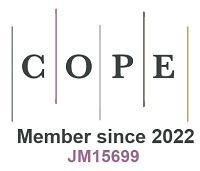REFERENCES
1. Deng D, Aouad W, Braff WA, Schlumpberger S, Suss ME, Bazant MZ. Water purification by shock electrodialysis: deionization, filtration, separation, and disinfection. Desalination 2015;357:77-83.
2. Xu X, Allah AE, Wang C, et al. Capacitive deionization using nitrogen-doped mesostructured carbons for highly efficient brackish water desalination. Chem Eng J 2019;362:887-96.
3. Zhao D, Lee LY, Ong SL, Chowdhury P, Siah KB, Ng HY. Electrodialysis reversal for industrial reverse osmosis brine treatment. Sep Purif Technol 2019;213:339-47.
4. Xi W, Jin J, Zhang Y, et al. Hierarchical MXene/transition metal oxide heterostructures for rechargeable batteries, capacitors, and capacitive deionization. Nanoscale 2022;14:11923-44.
5. Cai Y, Zhang L, Fang R, Wang Y, Wang J. Maximized ion accessibility in the binder-free layer-by-layer MXene/CNT film prepared by the electrophoretic deposition for rapid hybrid capacitive deionization. Sep Purif Technol 2022;292:121019.
6. Vafakhah S, Beiramzadeh Z, Saeedikhani M, Yang HY. A review on free-standing electrodes for energy-effective desalination: recent advances and perspectives in capacitive deionization. Desalination 2020;493:114662.
7. Chen B, Feng A, Deng R, Liu K, Yu Y, Song L. MXene as a cation-selective cathode material for asymmetric capacitive deionization. ACS Appl Mater Interfaces 2020;12:13750-8.
8. Zhang W, Liu Y, Jin C, et al. Efficient capacitive deionization with 2D/3D heterostructured carbon electrode derived from chitosan and g-C3N4 nanosheets. Desalination 2022;538:115933.
9. Zhu W, Lin Y, Kang W, et al. An aerogel adsorbent with bio-inspired interfacial adhesion between graphene and MoS2 sheets for water treatment. Appl Surf Sci 2020;512:145717.
10. Xu L, Ding Z, Chen Y, et al. Carbon nanotube bridged nickel hexacyanoferrate architecture for high-performance hybrid capacitive deionization. J Colloid Interface Sci 2023;630:372-81.
11. Tan Z, Wang W, Zhu M, et al. Ti3C2Tx MXene@carbon dots hybrid microflowers as a binder-free electrode material toward high capacity capacitive deionization. Desalination 2023;548:116267.
12. Cai Y, Zhang W, Fang R, Zhao D, Wang Y, Wang J. Well-dispersed few-layered MoS2 connected with robust 3D conductive architecture for rapid capacitive deionization process and its specific ion selectivity. Desalination 2021;520:115325.
13. Cai Y, Zhang W, Zhao J, Wang Y. Flexible structural construction of the ternary composite Ni,Co-Prussian blue analogue@MXene/polypyrrole for high-capacity capacitive deionization. Appl Surf Sci 2023;622:156926.
14. El-deen AG, El-kholly HK, Ali MEM, et al. Polystyrene sulfonate coated activated graphene aerogel for boosting desalination performance using capacitive deionization. Sep Purif Technol 2022;299:121760.
15. Yang X, Jiang H, Zhang W, et al. A novel “butter-sandwich” Ti3C2Tx/PANI/PPY electrode with enhanced adsorption capacity and recyclability toward asymmetric capacitive deionization. Sep Purif Technol 2021;276:119379.
16. Wang H, Wei D, Gang H, et al. Hierarchical porous carbon from the synergistic “pore-on-pore” strategy for efficient capacitive deionization. ACS Sustainable Chem Eng 2020;8:1129-36.
17. Liu Y, Wang K, Xu X, et al. Recent advances in faradic electrochemical deionization: system architectures versus electrode materials. ACS Nano 2021;15:13924-42.
18. Dixit F, Zimmermann K, Dutta R, et al. Application of MXenes for water treatment and energy-efficient desalination: a review. J Hazard Mater 2022;423:127050.
19. Lei J, Xiong Y, Yu F, Ma J. Flexible self-supporting CoFe-LDH/MXene film as a chloride ions storage electrode in capacitive deionization. Chem Eng J 2022;437:135381.
20. Srimuk P, Halim J, Lee J, Tao Q, Rosen J, Presser V. Two-dimensional molybdenum carbide (MXene) with divacancy ordering for brackish and seawater desalination via cation and anion intercalation. ACS Sustainable Chem Eng 2018;6:3739-47.
21. Zhu G, Chen L, Lu T, et al. Cu-based MOF-derived architecture with Cu/Cu2O nanospheres anchored on porous carbon nanosheets for efficient capacitive deionization. Environ Res 2022;210:112909.
22. Yu L, Tao X, Feng S, et al. Recent development of three-dimension printed graphene oxide and MXene-based energy storage devices. Tungsten 2024;6:196-211.
23. Ihsanullah I. MXenes (two-dimensional metal carbides) as emerging nanomaterials for water purification: progress, challenges and prospects. Chem Eng J 2020;388:124340.
24. Li B, Sun K, Xu W, et al. Tailoring interlayer spacing in MXene cathodes to boost the desalination performance of hybrid capacitive deionization systems. Nano Res 2023;16:6039-47.
25. Wang S, Li Z, Wang G, Wang Y, Ling Z, Li C. Freestanding Ti3C2Tx MXene/Prussian blue analogues films with superior ion uptake for efficient capacitive deionization by a dual pseudocapacitance effect. ACS Nano 2022;16:1239-49.
26. Qie H, Liu M, Fu X, et al. Interfacial charge-modulated multifunctional MoS2/Ti3C2Tx penetrating electrode for high-efficiency freshwater production. ACS Nano 2022;16:18898-909.
27. Wang K, Chen L, Zhu G, et al. Ferroferric oxide@titanium carbide MXene heterostructure with enhanced sodium storage ability for efficient hybrid capacitive deionization. Desalination 2022;522:115420.
28. Gong S, Liu H, Zhao F, et al. Vertically aligned bismuthene nanosheets on MXene for high-performance capacitive deionization. ACS Nano 2023;17:4843-53.
29. Mateen A, Ahmad Z, Ali S, et al. Silicon intercalation on MXene nanosheets towards new insights into a superior electrode material for high-performance Zn-ion supercapacitor. J Energy Storage 2023;71:108151.
30. Chen Z, Xu X, Wang K, et al. Hybrid of pyrazine based π-conjugated organic molecule and MXene for hybrid capacitive deionization. Sep Purif Technol 2023;315:123628.
31. Wang L, Liu Z, Wang Z, et al. Up-shifting the desalination rate limit of capacitive deionization via integrating chloride-capturing Bi nanocluster with flow-through cell architecture. Chem Eng J 2023;460:141726.
32. Chen Z, Xu X, Liu Y, et al. Ultra-durable and highly-efficient hybrid capacitive deionization by MXene confined MoS2 heterostructure. Desalination 2022;528:115616.
33. Hao Z, Cai Y, Wang Y, Xu S, Wang J. A coupling technology of capacitive deionization and MoS2/nitrogen-doped carbon spheres with abundant active sites for efficiently and selectively adsorbing low-concentration copper ions. J Colloid Interface Sci 2020;564:428-41.
34. Liu Y, Du X, Wang Z, et al. MoS2 nanoflakes-coated electrospun carbon nanofibers for “rocking-chair” capacitive deionization. Desalination 2021;520:115376.
35. Nguyen TKA, Wang TH, Doong R. Architectures of flower-like MoS2 nanosheet coated N-doped carbon sphere electrode materials for enhanced capacitive deionization. Desalination 2022;540:115979.
36. Peng W, Wang W, Han G, Huang Y, Zhang Y. Fabrication of 3D flower-like MoS2/graphene composite as high-performance electrode for capacitive deionization. Desalination 2020;473:114191.
37. Tian S, Zhang X, Zhang Z. Novel MoS2/NOMC electrodes with enhanced capacitive deionization performances. Chem Eng J 2021;409:128200.








